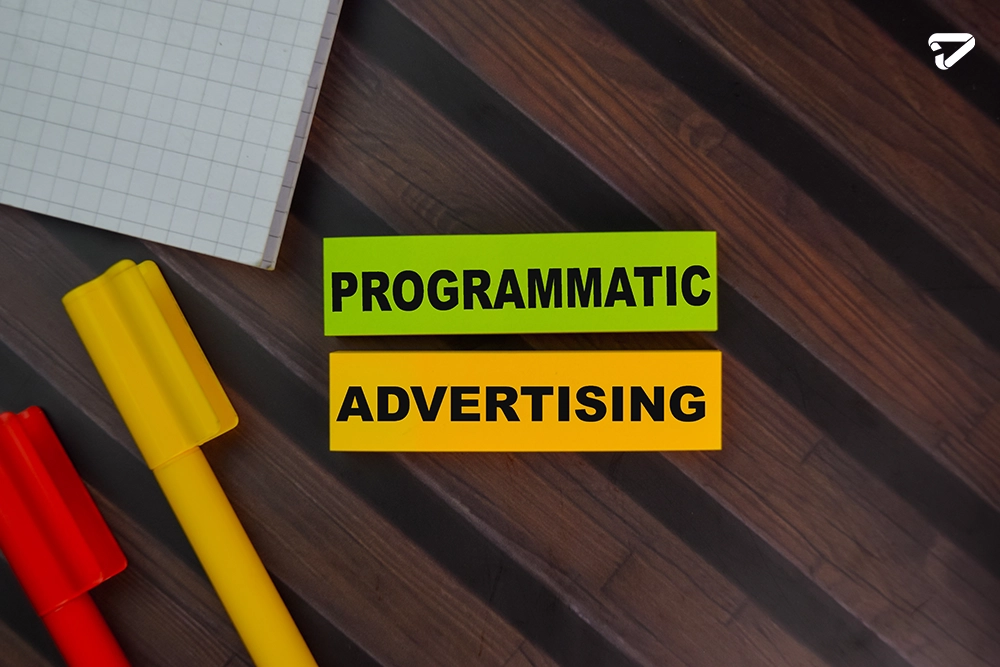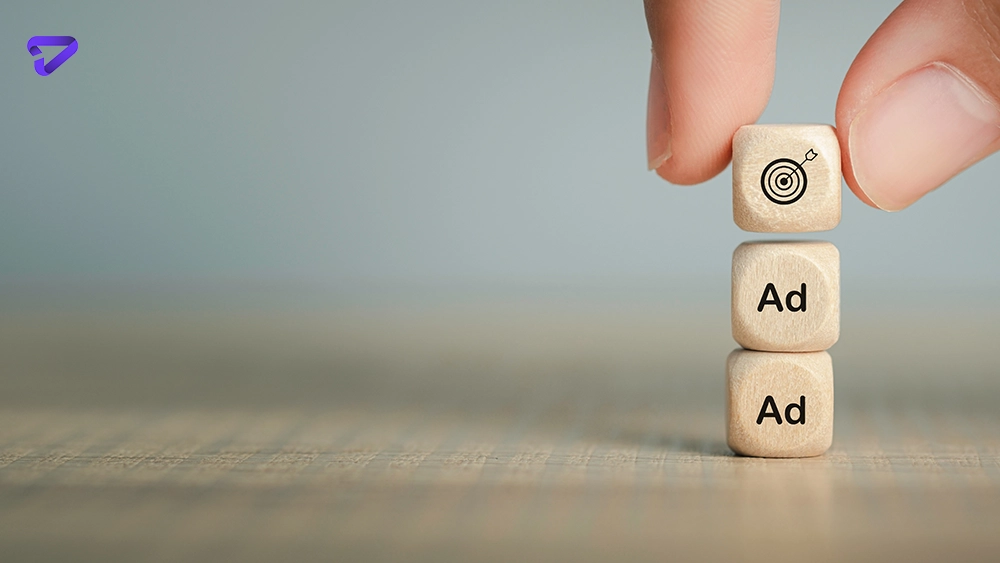
The Future of Advertising: Trends and Innovations
The future of advertising is set to be revolutionized by AI-driven personalization, immersive AR/VR experiences, and data-driven strategies, creating highly engaging and targeted campaigns.
Programmatic advertising has revolutionized the digital marketing landscape, offering a more efficient, targeted, and data-driven approach to the future of advertising.
As technology advances, the future of programmatic advertising promises even more exciting developments.
This article discusses programmatic advertising, including current trends, new technologies, and best practices that will influence its future.
Understanding Programmatic Advertising
What is Programmatic Advertising?
Programmatic advertising refers to the automated process of buying and selling ad inventory through a real-time bidding system.
Programmatic advertising uses software and algorithms to buy digital ad space, instead of manual negotiations and direct purchases like traditional methods.
This is changing the future of advertising.
Definition and Key Components
Real-Time Bidding (RTB): The automated auction process where ad impressions are bought and sold.
Demand-Side Platforms (DSPs): Platforms used by advertisers to purchase ad inventory.
Supply-Side Platforms (SSPs): Platforms used by publishers to sell ad inventory.
Ad Exchanges: Marketplaces where DSPs and SSPs interact to buy and sell ad space.
How it Differs from Traditional Advertising
Traditional advertising involves direct negotiations, fixed rates, and manual placements.
Programmatic advertising automates these processes, using data to drive decisions and optimize campaigns in real time.
Brief History and Evolution of Programmatic
Advertising
Programmatic advertising has come a long way since its inception.
First, it primarily served display ads but has since expanded.
Early 2000s: Introduction of real-time bidding (RTB).
2010: Growth of programmatic display advertising.
2013: Expansion into mobile and video advertising.
2015: Introduction of programmatic TV and radio.
2020 and Beyond: Emergence of advanced technologies like AI, machine learning, and blockchain in programmatic advertising.

Current State of Programmatic Advertising
Market Size and Growth Statistics
Programmatic advertising has undergone exponential growth over the past decade.
As of June 2024, eMarketer reports that programmatic ad spending in the US has indeed surpassed $100 billion.
Most digital ads, over 80%, are bought and sold automatically.
Programmatic advertising is a crucial factor in shaping the future of advertising.
Key Players in the Industry
Several key players dominate the programmatic advertising landscape, each offering unique solutions for advertisers and publishers:
Google Ads: A major player with a comprehensive suite of tools for programmatic buying.
The Trade Desk: Known for its advanced data and targeting capabilities.
MediaMath: Offers a customized and transparent DSP platform.
Adobe Advertising Cloud: Provides integrated solutions for cross-channel programmatic advertising.
Amazon Advertising: Leverages its vast consumer data for precise targeting.
Common Types of Programmatic Advertising
Programmatic advertising encompasses various ad formats and channels, allowing for versatile and comprehensive campaigns, which are crucial for the future of advertising:
Display Ads: Traditional banner ads placed on websites.
Video Ads: In-stream and out-stream video ads across various platforms.
Mobile Ads: Ads optimized for mobile devices, including in-app advertising.
Native Ads: Ads that blend seamlessly with the content of the host platform.
Connected TV (CTV) Ads: Ads served on smart TVs and streaming devices.

Benefits of Programmatic Advertising
Efficiency and Automation
Programmatic advertising automates the buying and selling process, reducing the need for manual intervention and streamlining workflows.
This automation allows for quicker adjustments and optimizations, ensuring that campaigns run smoothly and efficiently, embodying the future of advertising.
Targeting and Personalization
One of the most significant advantages of programmatic advertising is its ability to target specific audiences with precision.
Advertisers can use various data points, such as demographics, interests, and behaviors, to create highly personalized ad experiences.
This level of targeting increases the likelihood of engagement and conversion.
Real-Time Data and Analytics
Programmatic platforms provide real-time data and analytics, enabling advertisers to monitor performance and make data-driven decisions.
This immediate feedback loop allows for continuous optimization and improvement of campaigns, maximizing ROI.
Cost-Effectiveness
Programmatic advertising uses automation and real-time bidding to buy ads, often leading to lower costs than traditional methods.
Advertisers can achieve better outcomes with more efficient budget allocation and reduced waste, enhancing the future of advertising.

Emerging Trends in Programmatic Advertising
Increased Use of Artificial Intelligence and Machine Learning
AI and machine learning are transforming programmatic advertising by enhancing targeting, optimization, and predictive capabilities.
These technologies enable advertisers to analyze vast amounts of data, identify patterns, and make more informed decisions.
Growth of Programmatic Video Advertising
Programmatic video advertising is rapidly gaining traction as video content continues to dominate online consumption.
More people are using YouTube, TikTok, and streaming services, changing advertising and growing this trend in the process.
Expansion into New Channels
Programmatic advertising is growing and reaching new channels like Connected TV and Digital Out-of-Home.
It is also moving beyond traditional digital formats. These channels offer unique opportunities for advertisers to reach audiences in innovative ways.
Rise of Contextual Advertising
With increasing concerns over privacy and data regulation, contextual advertising is making a comeback.
Contextual advertising
focuses on placing ads that are relevant to the content of the webpage or app.
We do not use your information to target ads based on your behavior.
Privacy and Data Regulation Impact
The introduction of regulations like GDPR and CCPA has significantly impacted programmatic advertising.
Advertisers must navigate these regulations to ensure compliance and maintain consumer trust.

Innovations Shaping the Future of Programmatic Advertising
Blockchain Technology for Transparency and Fraud Prevention
People are looking at blockchain technology as a way to make programmatic advertising more clear and stop cheating.
Blockchain creates a secure record of transactions, which can verify ad legitimacy and decrease ad fraud.
Advanced Audience Segmentation Techniques
Advanced audience segmentation techniques leverage first-party data and sophisticated data management platforms (DMPs) to create highly detailed audience profiles.
This enables more precise targeting and improved campaign performance.
Programmatic Creative
Programmatic creative, also known as Dynamic Creative Optimization (DCO), allows for the automated creation and delivery of personalized ad experiences.
By using real-time data, DCO tailors ad content to individual users, enhancing engagement and effectiveness.
Enhanced Measurement and Attribution Models
As programmatic
advertising evolves, so do the methods for measuring and attributing campaign success.
Better measurement models like multi-touch attribution help us understand how different touchpoints lead to conversions more accurately.
Challenges Facing Programmatic Advertising
Ad Fraud and Transparency Issues
Ad fraud remains a significant challenge in programmatic advertising. Common types of ad fraud include click fraud, impression fraud, and domain spoofing.
Ensuring transparency and legitimacy in ad transactions is crucial to combating these issues.
Seeing Ads and Blocking Them
Ensuring ads are viewable and not blocked by users is another challenge.
Low view rates and widespread use of ad blockers can reduce the effectiveness of programmatic campaigns.
Complexity and Fragmentation of the Ecosystem
The programmatic advertising ecosystem is complex and fragmented, with numerous players and technologies involved.
Navigating this landscape can be challenging for advertisers.
Best Practices for Programmatic Advertising
Choosing the Right Demand-Side Platform (DSP)
Selecting an appropriate Demand-Side Platform (DSP) is critical for the success of your programmatic advertising campaigns.
A good DSP offers advanced targeting capabilities, robust analytics, and a user-friendly interface.
Key Features to Look for in a DSP:
Targeting Options: Advanced targeting capabilities including demographic, geographic, and behavioral targeting.
Data Integration: Ability to integrate first-party and third-party data for enhanced targeting.
Real-Time Bidding (RTB): Efficient and effective RTB processes.
Analytics and Reporting: Comprehensive analytics and reporting tools to monitor and optimize campaign performance.
User Interface: Intuitive and easy-to-use interface for campaign management.

Building Effective Programmatic Campaigns
Creating a successful programmatic campaign involves meticulous planning, clear goal setting, and continuous optimization.
Steps to Build an Effective Programmatic Campaign:
Set Clear Goals and KPIs: Define what success looks like and establish measurable Key Performance Indicators (KPIs).
Audience Segmentation: Identify and segment your target audience based on various data points.
Creative Strategy: Develop compelling ad creatives tailored to your target audience.
Campaign Setup: Configure your campaign settings, including budget, bidding strategy, and targeting parameters.
Monitor and Optimize: Every day monitor campaign performance and make data-driven adjustments.
Continuous Monitoring and Optimization
To ensure programmatic campaigns succeed, track performance, and make improvements using data analytics.
The Role of Data in Programmatic Advertising
Importance of First-Party Data
First-party data, collected directly from your audience, is invaluable for programmatic advertising.
It provides accurate and reliable insights into user behavior and preferences.
Using Third-Party Data Responsibly
Using both first-party and third-party data can enhance targeting by providing a deeper understanding of user behavior.
Integrating CRM Data for Better Targeting
Integrating CRM data with your programmatic advertising efforts allows for more personalized and effective targeting.
Case Studies of Successful Programmatic Advertising Campaigns
Example 1: Nike
Nike used programmatic advertising to launch a targeted campaign promoting its new line of running shoes.
Nike used customer data and advanced audience segmentation to show personalized ads to people interested in running gear.
Example 2: Starbucks
Starbucks implemented a programmatic advertising campaign to promote its loyalty program.
Starbucks used real-time bidding and dynamic creative optimization to display personalized ads to a wide audience.
This encouraged people to join the loyalty program.

The Future Outlook of Programmatic Advertising
Predictions for the Next 5-10 Years
The future of programmatic advertising is poised for significant advancements, driven by emerging technologies and evolving consumer behaviors.
Expert Opinions and Quotes
John Doe, CEO of AdTech Innovations, believes AI and machine learning will impact programmatic advertising in the future.
He believes that the smooth integration of these technologies will be crucial.
These technologies will enable advertisers to deliver highly personalized and engaging ad experiences at scale.”
Jane Smith, Digital Marketing Strategist: “As privacy regulations continue to evolve, contextual advertising will become increasingly important.
Advertisers will need to find creative ways to deliver relevant ads without relying heavily on user data.”
Conclusion
Programmatic advertising is a powerful and evolving tool in the digital marketing arsenal.
To get the most out of programmatic advertising, businesses should keep up with industry trends and best practices.
As technology continues to advance, the future of programmatic advertising promises to be even more dynamic, offering new opportunities for innovation and growth.
Embrace these changes, and prepare to stay ahead in the competitive world of digital advertising.
FAQs About Programmatic Advertising
What is the difference between programmatic and traditional advertising?
Programmatic advertising automates the ad buying process using real-time bidding and data-driven decisions, while traditional advertising involves manual negotiations and direct purchases.
How does programmatic advertising improve ROI?
By leveraging data and automation, programmatic advertising allows for more precise targeting, real-time optimization, and efficient budget allocation, leading to better ROI.
What are the main challenges of programmatic advertising?
Key challenges include ad fraud, ensuring view, navigating privacy regulations, and managing the complexity of the programmatic ecosystem.
How can small businesses benefit from programmatic advertising?
Small businesses can benefit from programmatic advertising by reaching highly targeted audiences, optimizing ad spend, and leveraging real-time data to improve campaign performance.
What are the future trends to watch in programmatic advertising?
Future trends will include increased use of AI and machine learning.
These technologies will expand into new channels such as Connected TV and Digital Out-of-Home.
Additionally, there will be a rise in contextual advertising.








